
The key elements of the Theory of Constraints were published in the 1980s in Dr. Goldratt’s novel “The Goal”. It became an international bestseller and remains a classic of management.
Since then, the theory has been significantly expanded on. There also were numerous advancements made in identifying the appropriate managerial practices to help with the theory’s application. This has been pursued with the support of the TOC Thinking Processes, which are meant to unveil and tackle our mental models i.e. the cognitive constraint.
The concept of constraint has been crucial in identifying the correct algorithms used when managing production, projects and the synchronization of processes. Unfortunately, constraints are very often confused with bottlenecks.
The definition of constraint is very well known:
The Constraint is the phase of the production, of a project or a process that determines the pace at which the System generates value (units of the goal).
The Constraint is THE LEVERAGE POINT of the System.

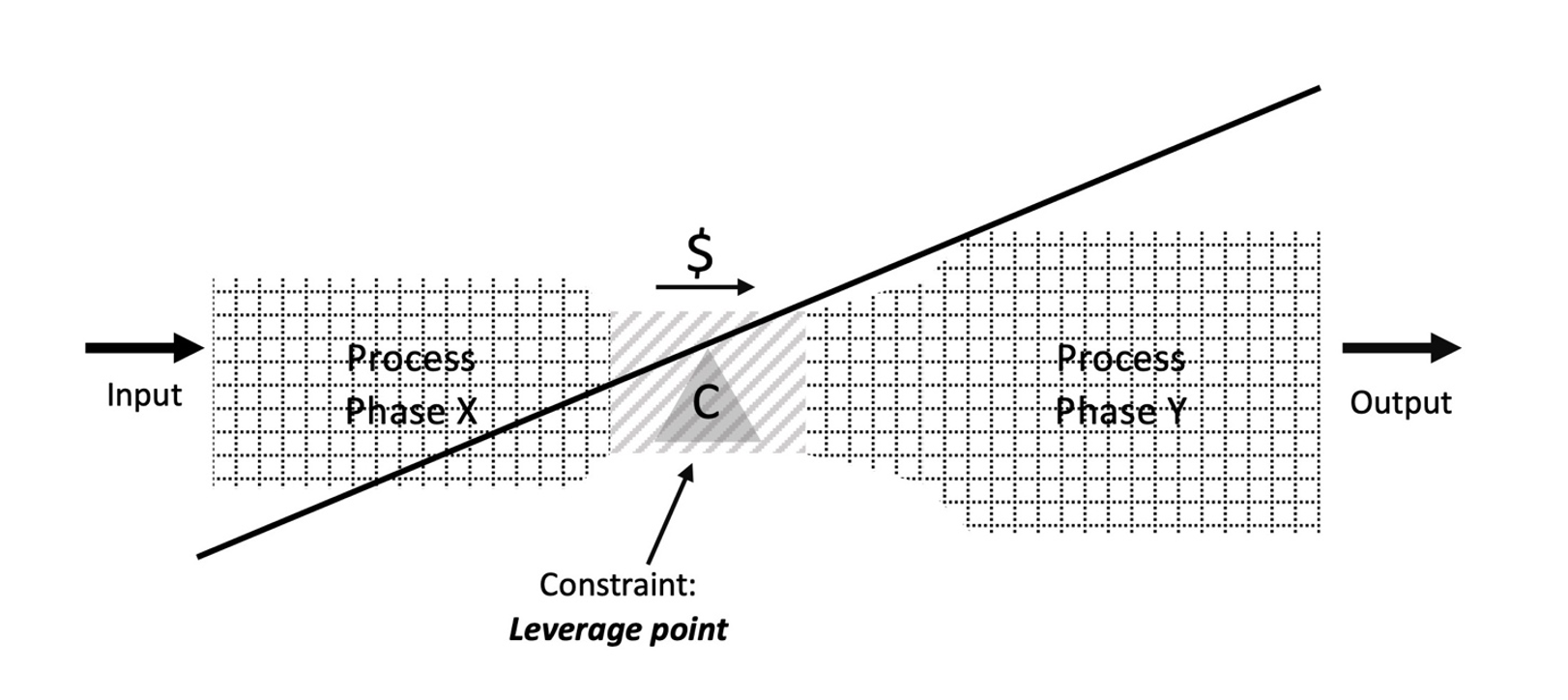
By its definition, the constraint is the phase of the System that can never be left idle:
Every minute lost on the constraint phase directly translates in throughput that is lost forever.
This means that the constraint phase must be protected somehow. After all, variation exists.
Dr. Goldratt identified a way to protect the constraint from the impact of variation by inserting a Buffer in front of it. A Buffer is a measure of TIME, and when placed in front of the constraint it prevents variation from affecting the correct functioning of the system.
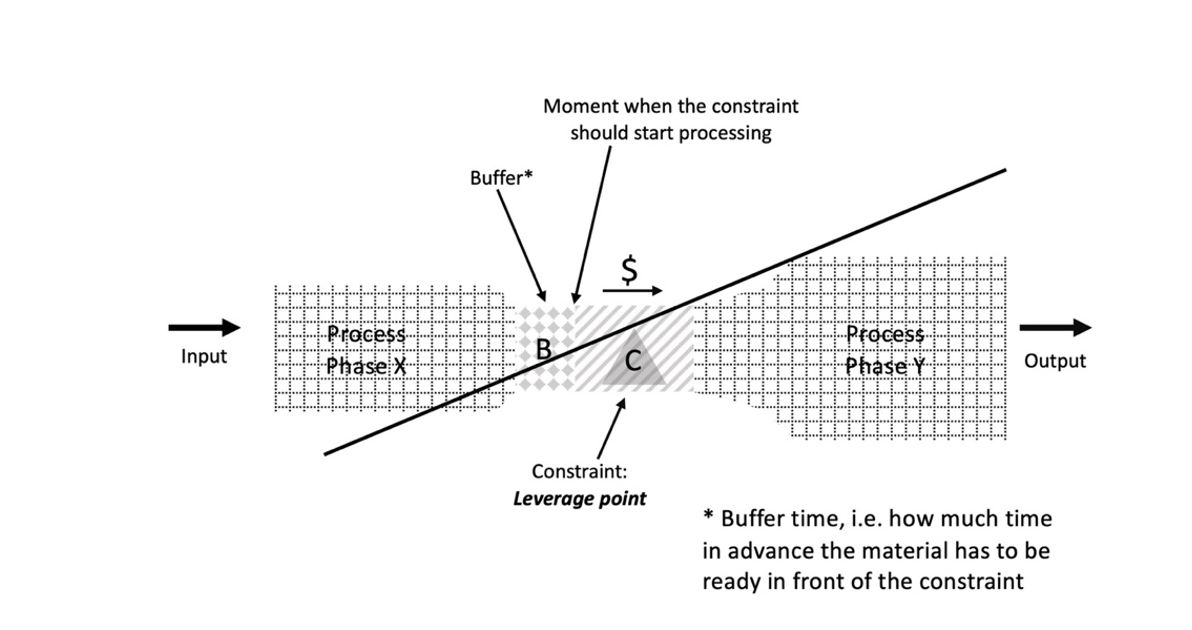
The Buffer actually has a dual role: protection and control. As we just examined the protection role, let’s see how the control role is carried out.

The traditional approach adopted by any TOC practitioner is the so called “three-zone approach”.
This is an empirical approach introduced by Dr. Goldratt 40 years ago. Taking a production process, a project, or any other process as an example, here’s how this works. The Buffer is divided into three zones and, depending on the ‘Buffer zone’ (buffer consumption) that is affected during a process, a different managerial practice is triggered.
The buffer will “empty out” or “fill up”, depending on whether the tasks/processes leading to the constraint are completed earlier or later than scheduled. This creates what we call “holes in the buffer”.
Unfortunately, relying only on empiricism is very often misleading and failing to understand the nature of variation may trigger the wrong managerial decisions. We need a “more scientific” approach: we need to use Statistical Process Control (SPC).
Let’s take a look at four different scenarios.
Scenario One
In the first case, we detect ‘holes’ in the buffer for zones 2 and 3. The three-zone approach leads us to not take action. As the consumption process is statistically stable and oscillates within the three zones, we don’t need to take any action (not even “go and check”).
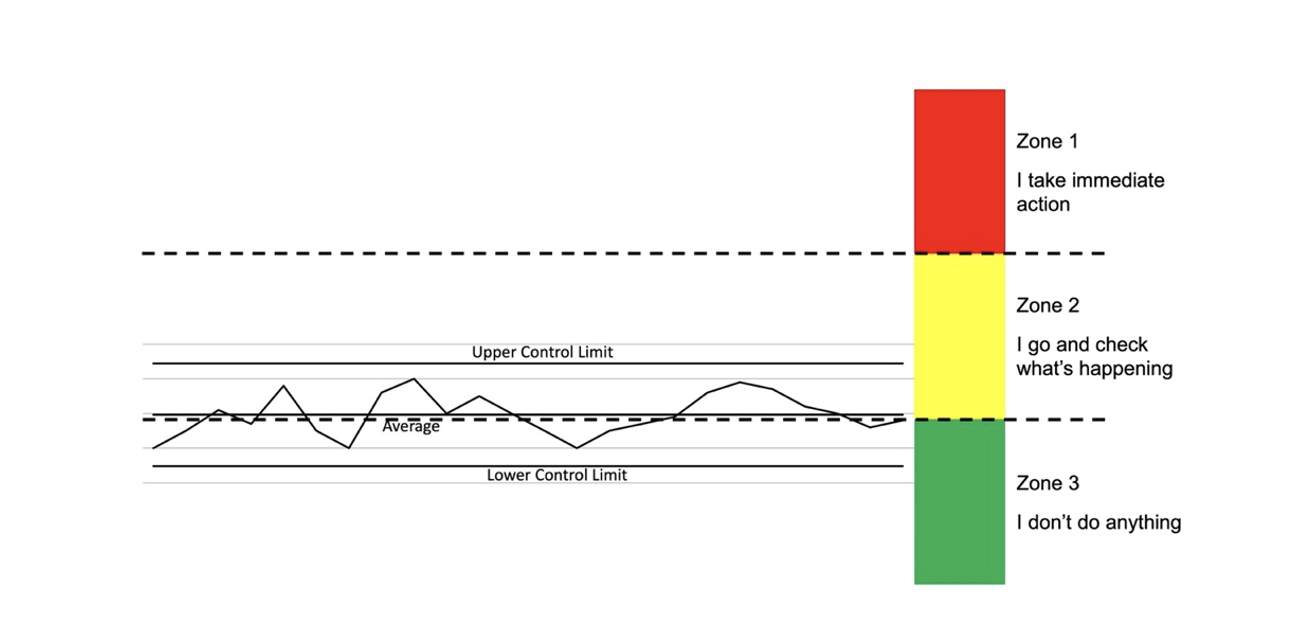
Scenario Two
In the second case, we detect ‘holes’ in the buffer for zones 2 and 3. The three-zone approach leads us to act on the process (go and check). However, the process is now out of statistical control, i.e. not predictable. Even if all the points fall within zones 2 and 3, we need to act immediately and get the process back in statistical control (work on the System).
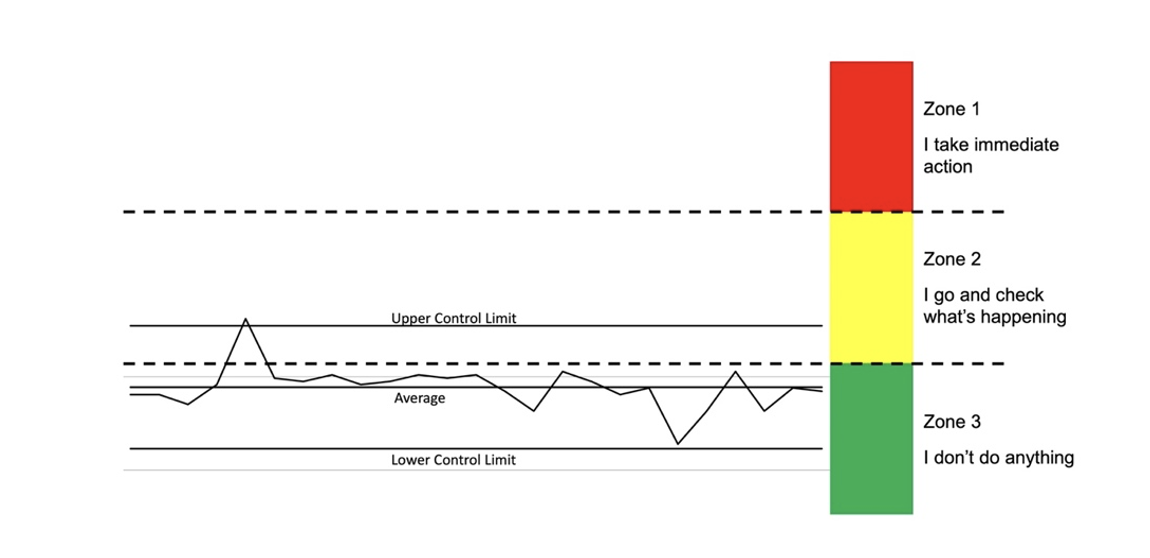
Scenario Three
In the third case, we detect ‘holes’ only in zone 3 of the buffer. The three-zone approach prescribes not to intervene on the process; however, the process is out of statistical control, i.e. completely unpredictable. Therefore, we need to act immediately just as in case 2. We must bring the process back into statistical control (work on the System).
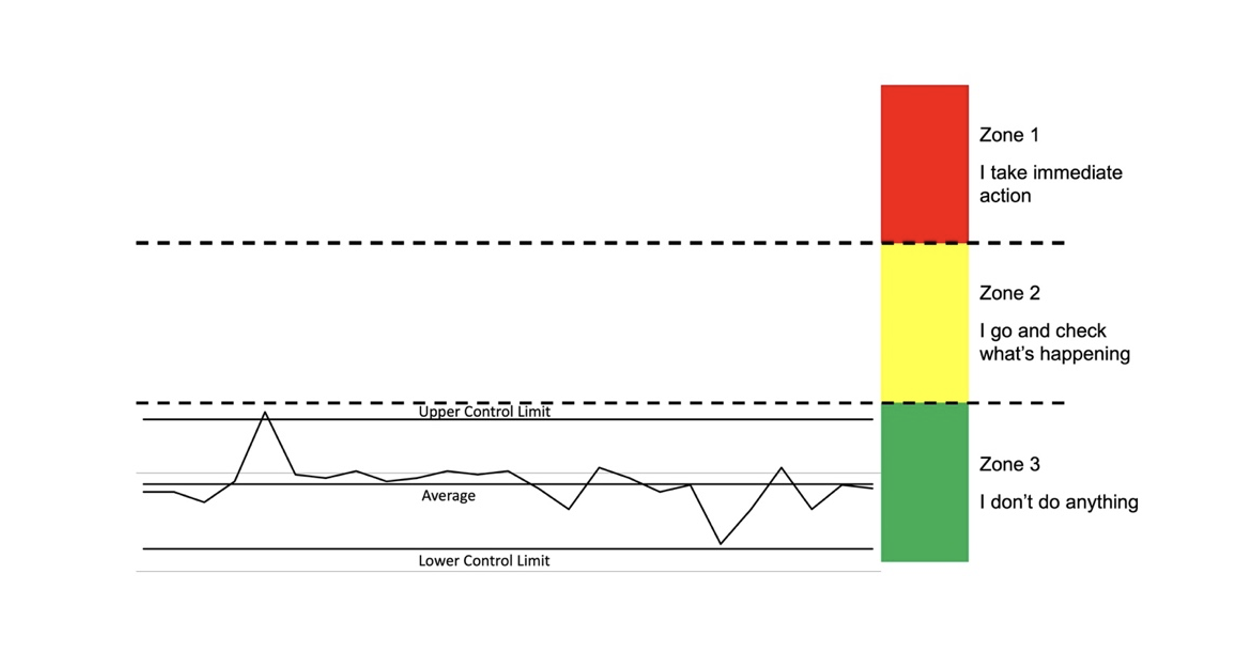
Scenario Four
In the fourth case, we detect ‘holes’ in the buffer of zones 1 and 2. The three-zone approach urges immediate action and leads us to interfere with the process (tamper with the System). Yet, given the stability of the process, there would be no reason to interfere. As this process is predictable with an upper limit completely within zone 1, we do not need to take any action.
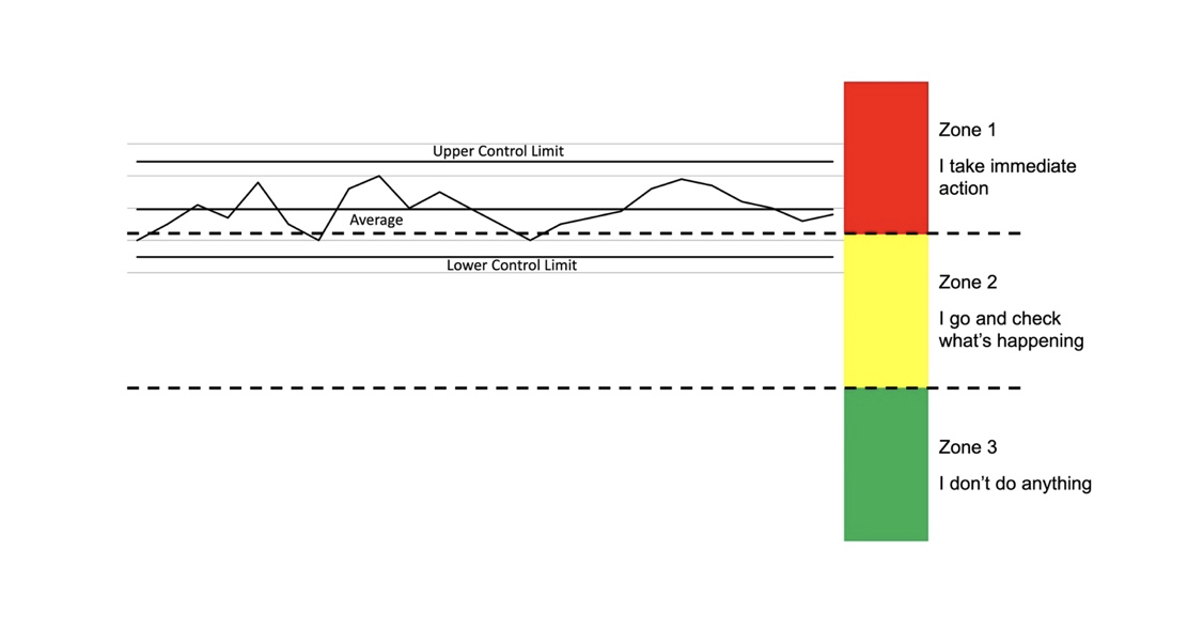
Generally speaking, routine variation can have both a negative and a positive impact on the buffer size. The buffer size oscillates as a consequence of the positive or negative impact of routine variation. This is specifically valid for the buffer in front of a physical constraint..
Buffers and Project Management
Regarding the activity of Buffer Management in Project Management, a clarification is necessary.
In Project Management the buffer is positioned at the end of the Critical Chain and, because of the intrinsic nature of a project’s execution, its size can only increase. This is because positive variation (finishing a task early) will be lost, while negative variation (finishing a task late) will be transferred to the chain.
TOC practitioners still rely on the empirical approach: they use the so-called fever chart:
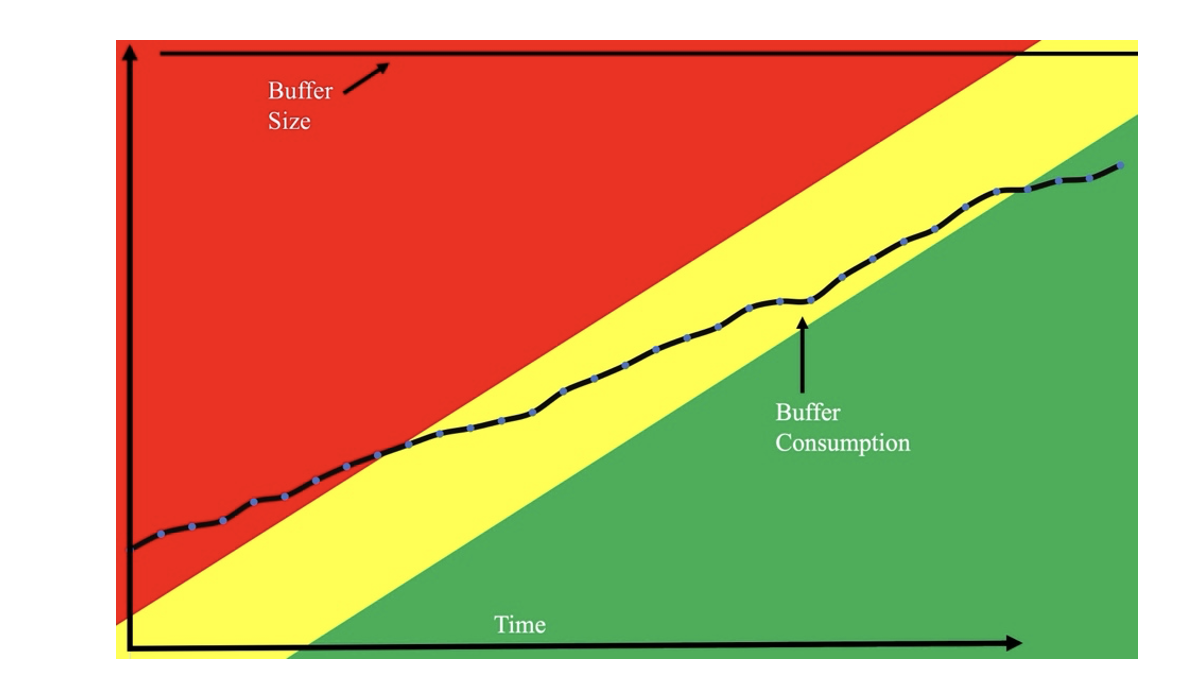
Again, holes in the red zone or the yellow zone would trigger some actions.
However, we can still use Statistical Process Control to take better informed, rational decisions:
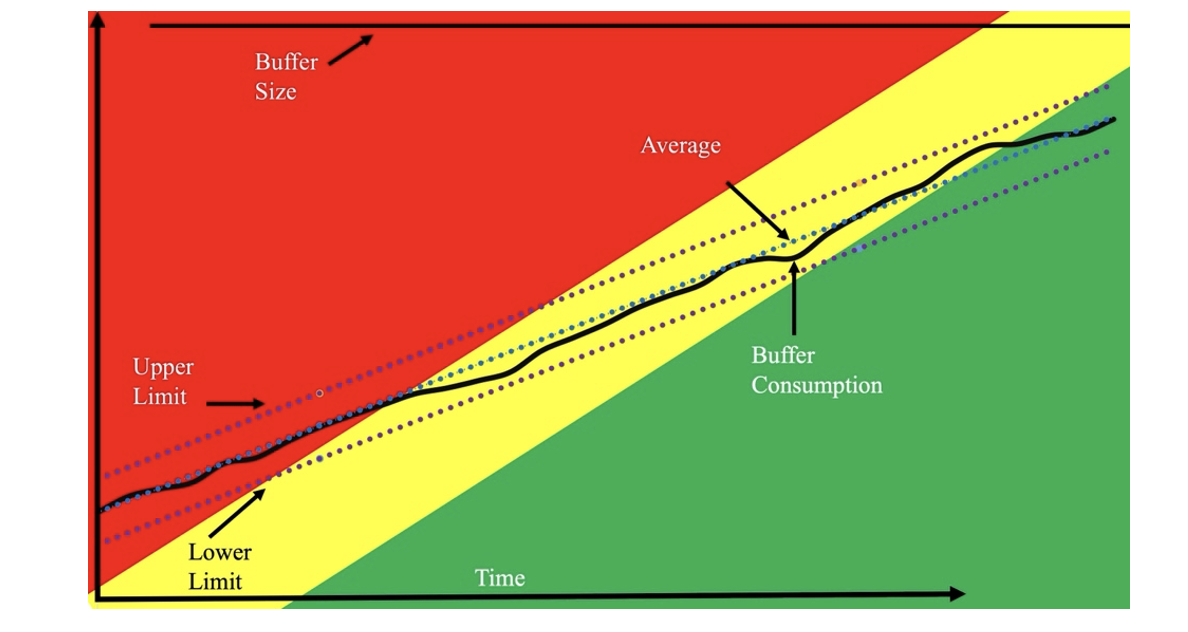
This is a Behavior Chart (Control Chart) for a trend. In this specific example, the trend is perfectly predictable, and we have no need to take any action (no need to tamper with the system).
A little knowledge helps a lot.
Lack of knowledge… that is the problem. (Dr. W. Edwards Deming)
To find out more about ten guided steps to a systemic leap ahead for your company, contact Angela Montgomery at intelligentmanagement@sechel.ws
SCHEDULE AN INTRODUCTORY CALL WITH US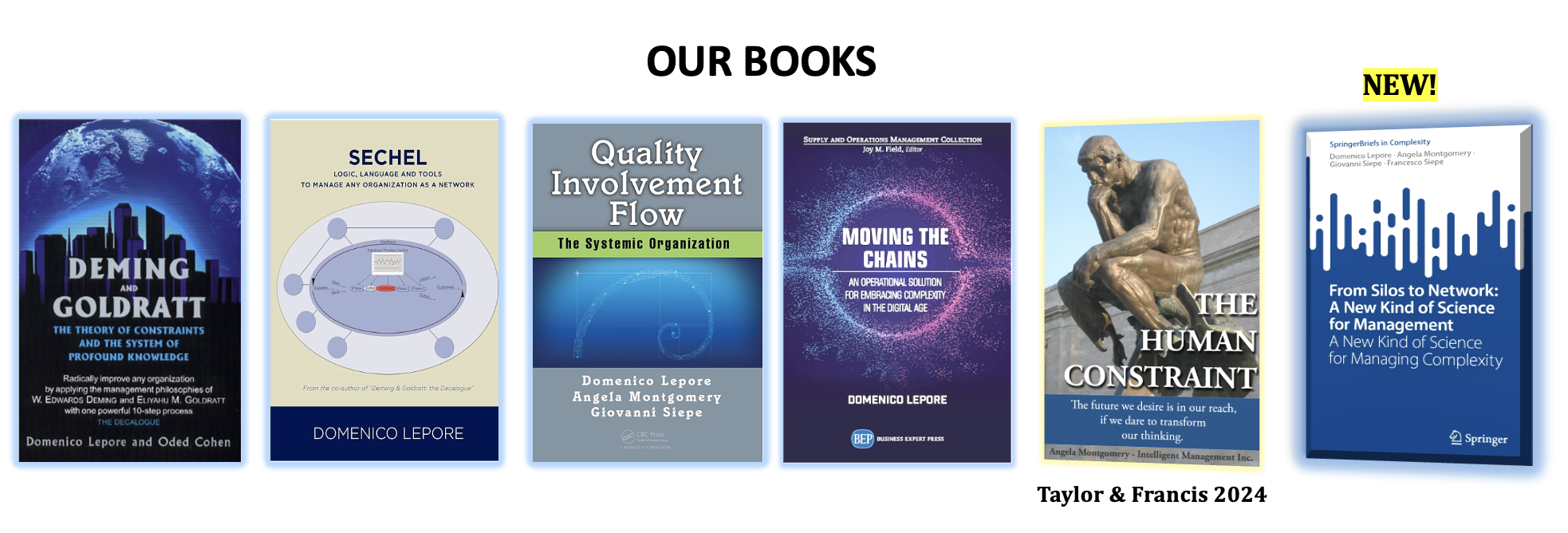
Intelligent Management works with decision makers with the authority and responsibility to make meaningful change. We have helped dozens of organizations to adopt a systemic approach to manage complexity and radically improve performance and growth for 25 years through our Decalogue management methodology. The Network of Projects organization design we developed is supported by our Ess3ntial software for multi-project finite scheduling based on the Critical Chain algorithm.
See our latest books: From Silos to Networks: A New Kind of Science for Management from Springer, Moving the Chains: An Operational Solution for Embracing Complexity in the Digital Age by our Founder Dr. Domenico Lepore, and ‘Quality, Involvement, Flow: The Systemic Organization’ from CRC Press, New York by Dr. Domenico Lepore, Dr. .Angela Montgomery and Dr. Giovanni Siepe.





Leave a Reply